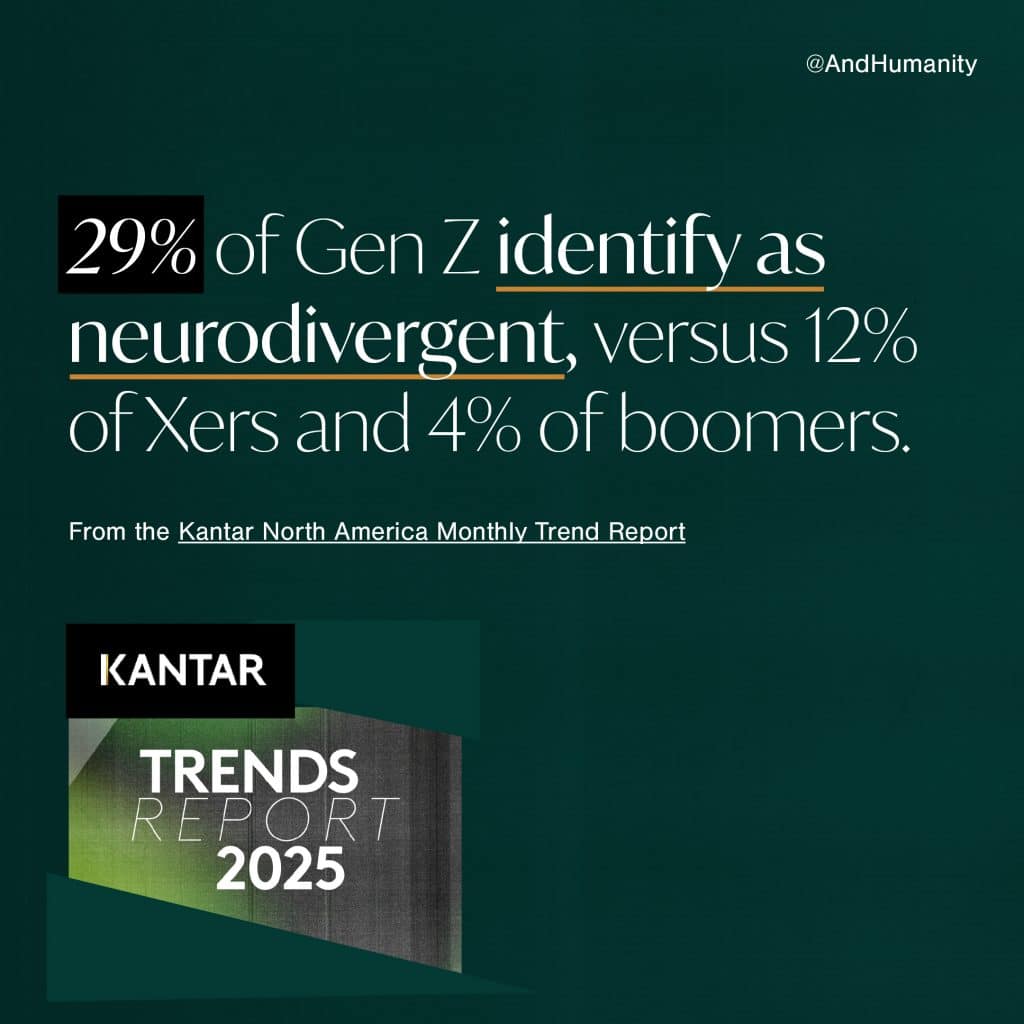It’s Disability Pride Month, and Kantar’s June 2025 North America Trends Report just reported that 29% (!) of Generation Z identify as neurodivergent.

So if brands want to resonate with this growing community, they must start by understanding that neurodivergence isn’t just autism or ADHD – it includes a variety of conditions such as dyslexia, dyspraxia, dyscalculia, dysgraphia, Tourette’s Syndrome, OCD, and more.
Thus, below are 20 tips for brands to embrace to support the full spectrum of neurodivergent experiences:
- Design for different thinkers: Offer content in different varieties – text, audio, and visual formats.
- Optimize for sensory needs: Choose simple layouts, readable fonts, and sensory-friendly colours.
- Provide clear pathways to support: Highlight easily accessible help options, FAQs, or support chats – making assistance obvious and stress-free to find.
- Build in flexibility: Let users personalize their experience and interact in multiple ways.
- Champion intersectionality: Reflect the full range of neurodivergent identities and stories.
- Foster psychological safety: Show you value neurodivergent voices and welcome feedback.
- Break information into chunks: Present key points in short, digestible sections – helping reduce cognitive overload.
- Avoid autoplay and time-sensitive content: Unexpected sounds or countdown timers can create stress – give users control over how and when they engage.
- Use high-contrast visuals and clear icons: They help neurodivergent audiences process information more easily.
- Add interactive elements: Polls, quizzes, and surveys increase engagement and invite participation.
- Maintain consistency in design and layout: Predictable navigation helps reduce anxiety and confusion.
- Always include alt text and captions: Make images and videos accessible for all users.
- Minimize ambiguity in instructions: Give step-by-step guidance and avoid vague phrases – so every user knows exactly what to do next.
- Use straightforward, jargon-free language: Keep communication direct to avoid confusion.
- Co-create with neurodivergent creators: Their insights lead to more respectful and effective marketing.
- Normalize reminders and easy follow-ups: Help neurodivergent consumers stay connected without pressure.
- Encourage quiet or low-stimulation events: Create welcoming brand moments for sensory-sensitive audiences.
- Use multi-sensory content: Combine visuals, audio, and text – engaging a variety of learning preferences.
- Leverage clear calls to action: Guide neurodivergent users through next steps – using direct prompts and visually distinct buttons.
- Be transparent about ongoing learning: Show humility and openness as you improve your inclusivity practices.
Learn more about what we do and who we do it for on our services page.
Sign up for our newsletter here for more insights on marketing, advertising, communications, and how the industry intersects with inclusion.









